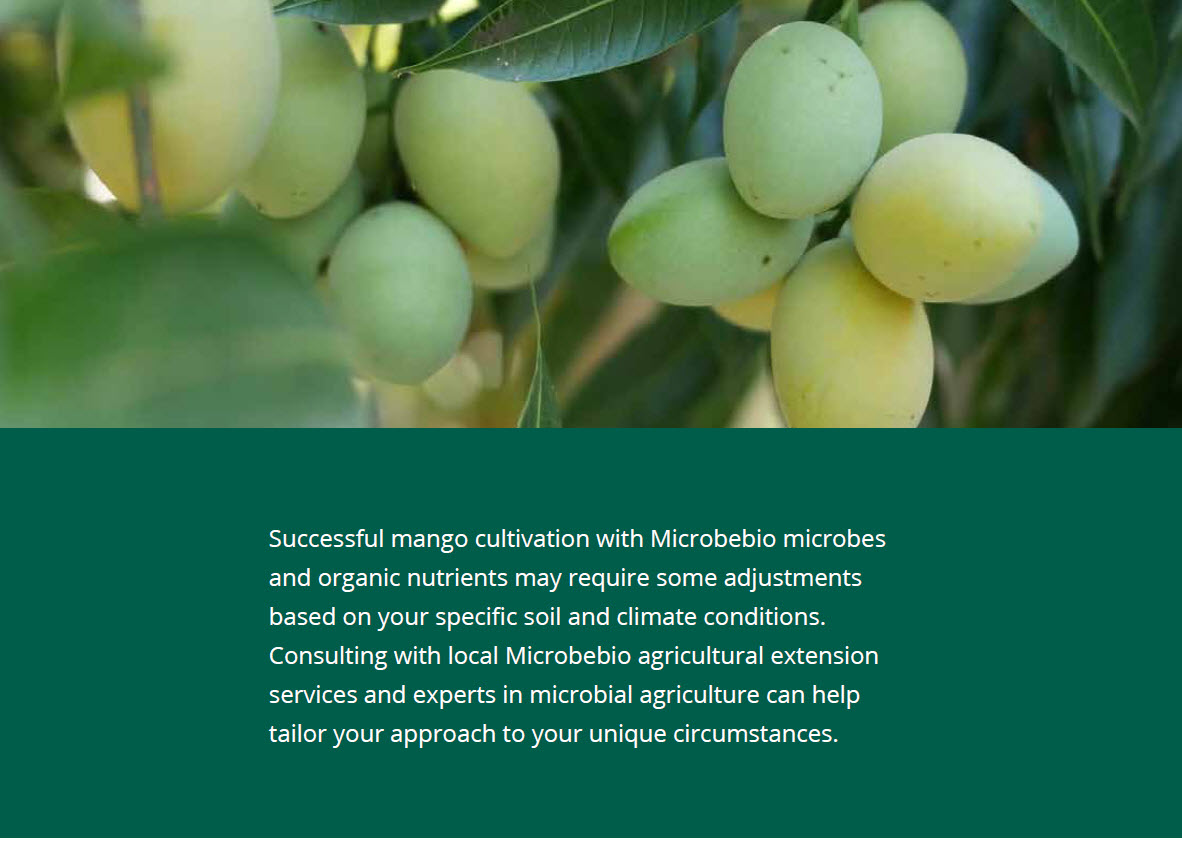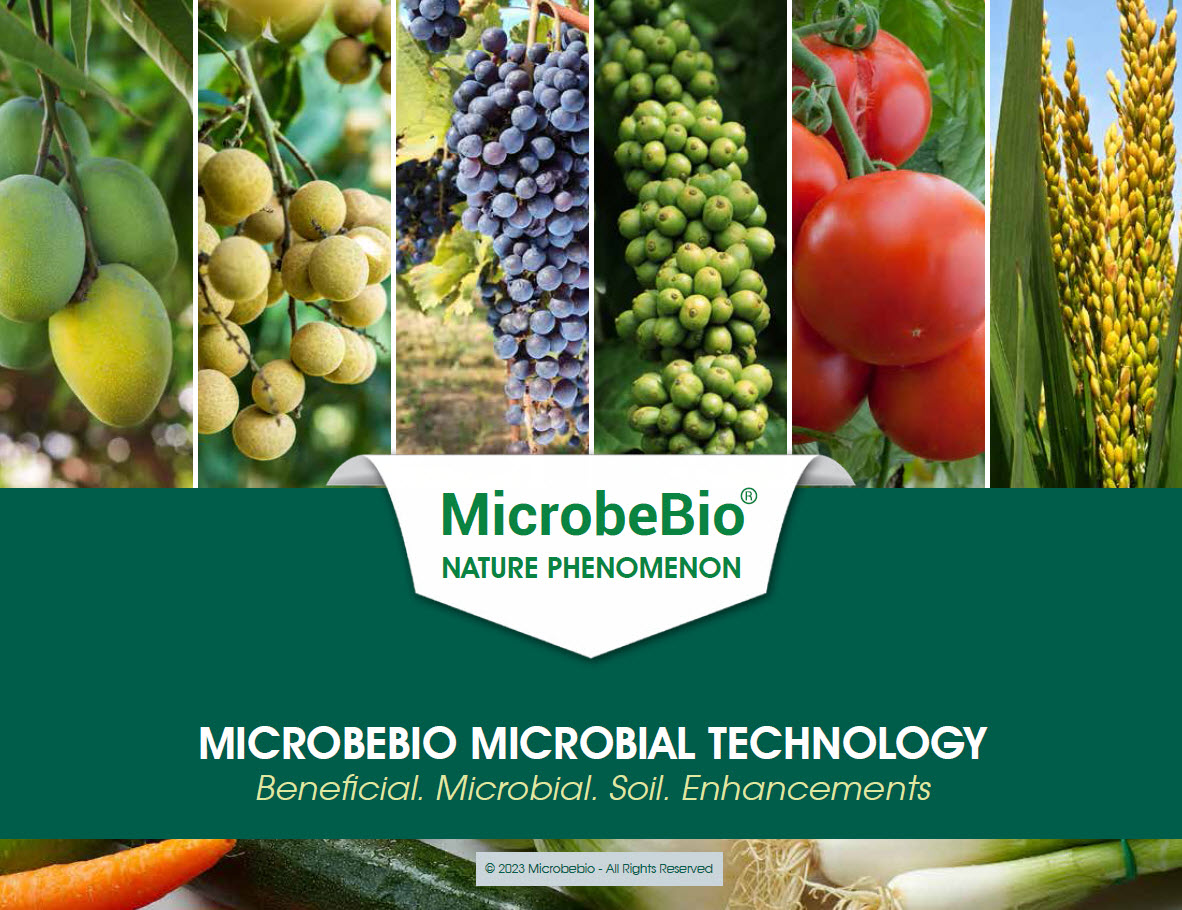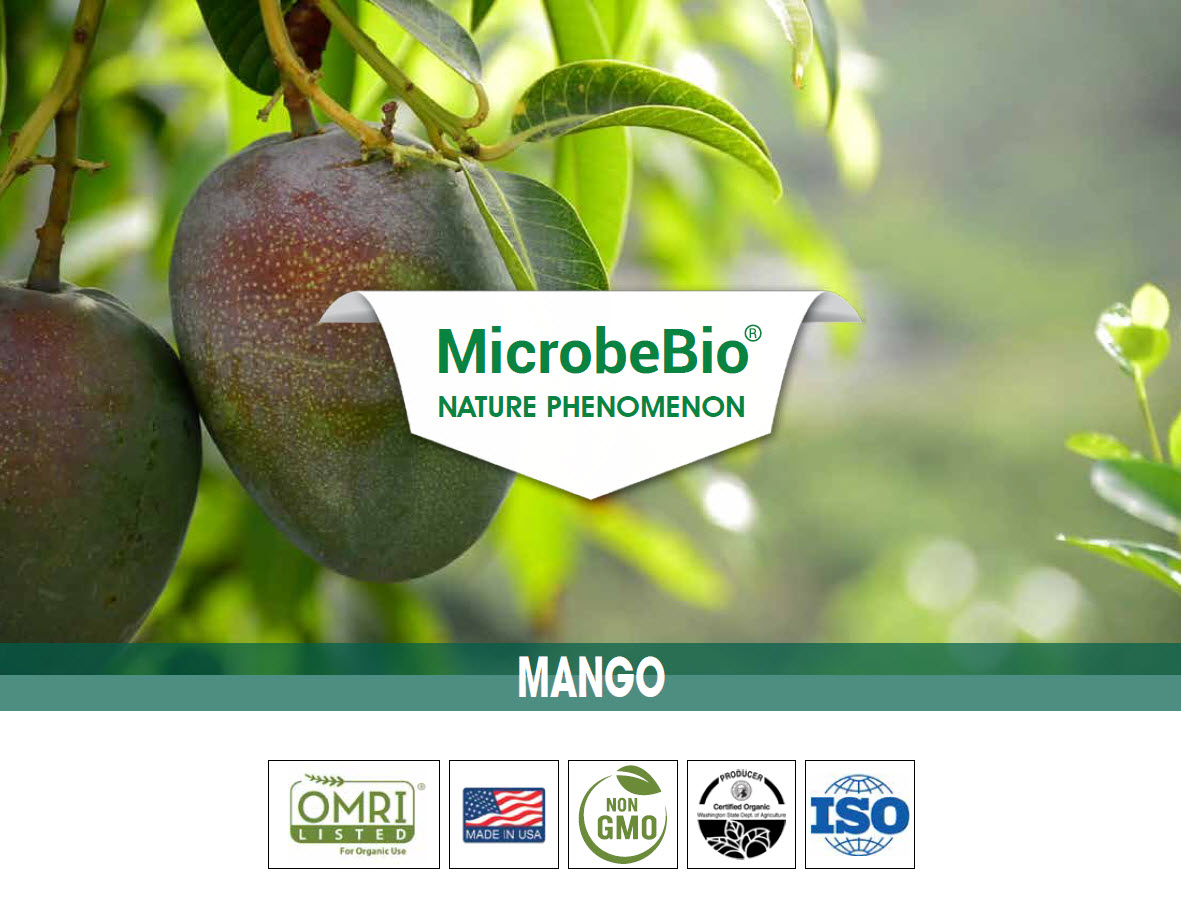
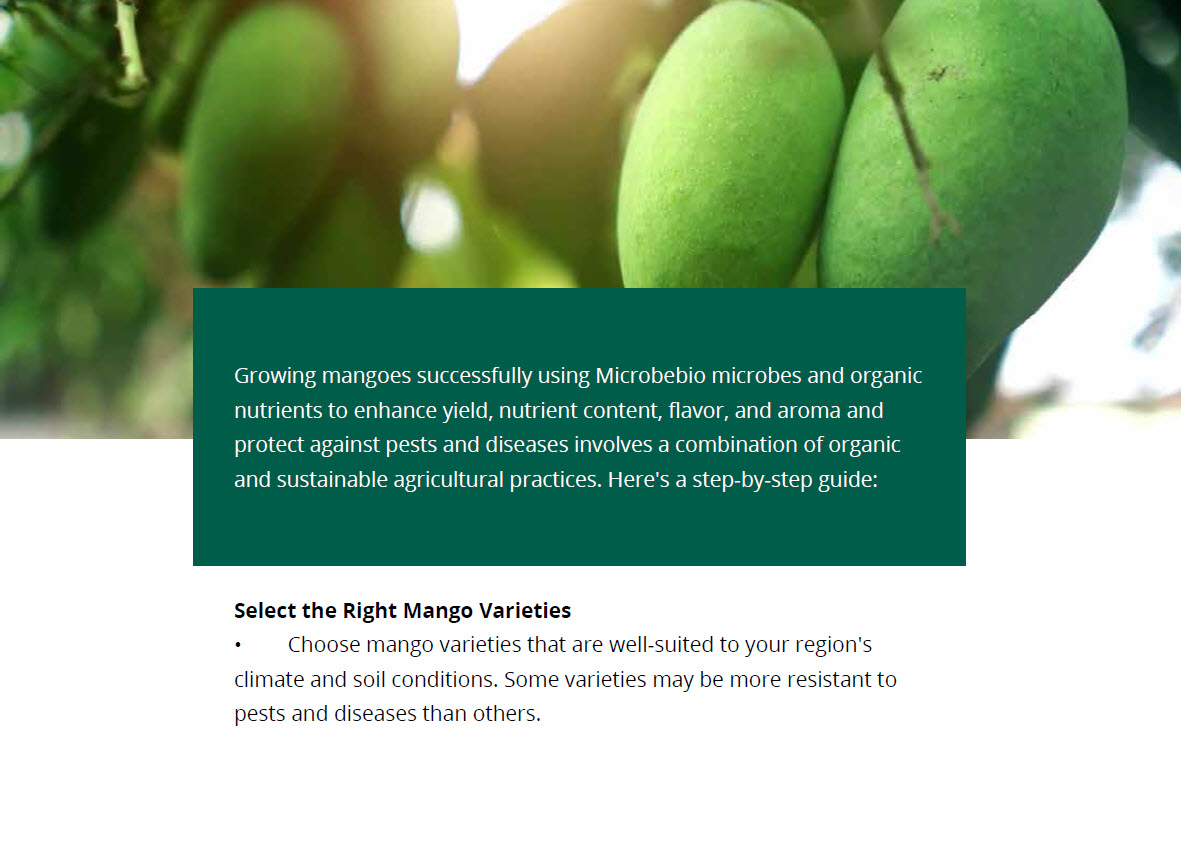
Choose a Suitable Location
- Mango trees thrive in full sunlight and well-drained soil. Ensure proper spacing between trees for good air circulation.
Soil Preparation
- Conduct a soil test to assess the pH and nutrient levels of your soil. Mango trees prefer slightly acidic to neutral soil (pH 6-7). Improve soil fertility by adding organic matter such as compost, well-rotted manure, or organic mulch.
Microbebio Microbes
- Consult with Microbebio experts in microbial agriculture to select the right beneficial microbes for your mango orchard. Consider mycorrhizal fungi, nitrogen-fixing bacteria, and other beneficial microorganisms.
- Apply these beneficial microbes to the root zone when planting mango trees or as directed by the microbial product manufacturer.
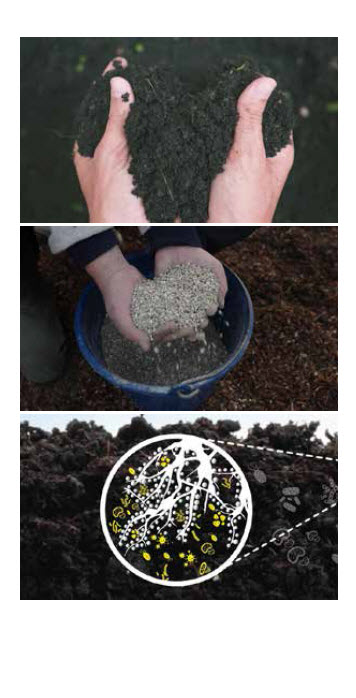
Organic Nutrient Management
- Implement a nutrient management plan that includes organic fertilizers and soil amendments. Organic options may include compost, aged manure, bone meal, and fish emulsion.
- Apply nutrients in a balanced manner according to the needs of the mango trees and the results of your soil test. Water Management
- Provide regular and consistent watering to mango trees, especially during dry periods. Use mulch around the base of the trees to conserve soil moisture and suppress weeds.
Pest and Disease Control
- Practice integrated Microbebio pest management (IPM) to control pests and diseases. Encourage natural predators and beneficial insects in your orchard.
- Beneficial microbes in the soil can help protect against soil-borne diseases.

Pruning and Maintenance
- Prune mango trees as needed to promote proper airflow, reduce disease pressure, and manage tree size.
- Remove dead or diseased branches promptly.
Fruit Thinning
- Thin out excess fruit clusters to improve fruit size and quality.
Harvesting
- Harvest mangoes when they are mature but still firm. The fruit should have developed its characteristic aroma and color.
- Handle mangoes carefully to avoid bruising.
Post-Harvest Care
- Store harvested mangoes in a cool, dry place to extend shelf life. Maintain proper humidity levels to preserve fruit quality.
Record Keeping
- Keep detailed records of your farming practices, including the application of beneficial microbes, fertilization, and pest/disease management, to track your progress and make informed decisions for future seasons.

